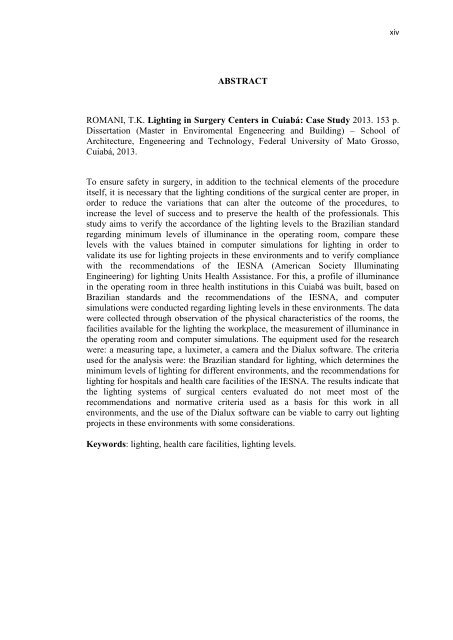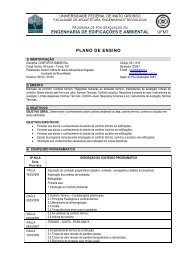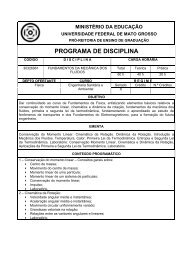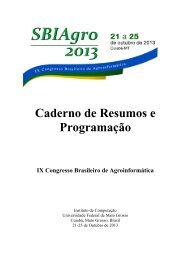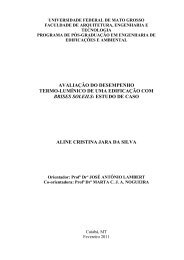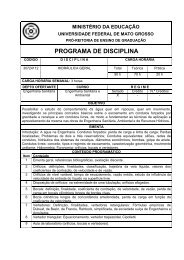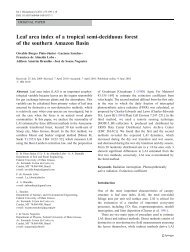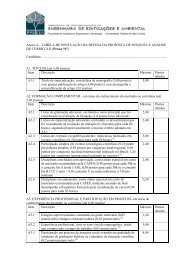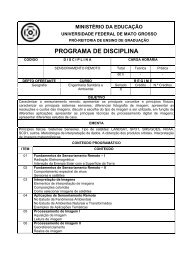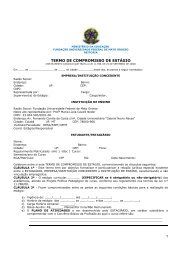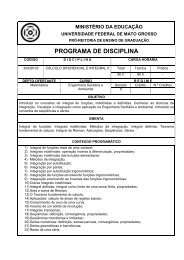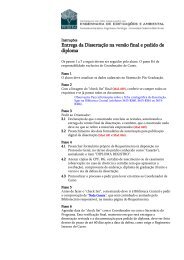You also want an ePaper? Increase the reach of your titles
YUMPU automatically turns print PDFs into web optimized ePapers that Google loves.
xiv<br />
ABSTRACT<br />
ROMANI, T.K. Lighting in Surgery Centers in Cuiabá: Case Study 2013. 153 p.<br />
Dissertation (Master in Enviromental Engeneering and Building) – School of<br />
Architecture, Engeneering and Technology, Federal University of Mato Grosso,<br />
Cuiabá, 2013.<br />
To ensure safety in surgery, in addition to the technical elements of the procedure<br />
itself, it is necessary that the lighting conditions of the surgical center are proper, in<br />
order to reduce the variations that can alter the outcome of the procedures, to<br />
increase the level of success and to preserve the health of the professionals. This<br />
study aims to verify the accordance of the lighting levels to the Brazilian standard<br />
regarding minimum levels of illuminance in the operating room, compare these<br />
levels with the values btained in computer simulations for lighting in order to<br />
validate its use for lighting projects in these environments and to verify compliance<br />
with the recommendations of the IESNA (American Society Illuminating<br />
Engineering) for lighting Units Health Assistance. For this, a profile of illuminance<br />
in the operating room in three health institutions in this Cuiabá was built, based on<br />
Brazilian standards and the recommendations of the IESNA, and computer<br />
simulations were conducted regarding lighting levels in these environments. The data<br />
were collected through observation of the physical characteristics of the rooms, the<br />
facilities available for the lighting the workplace, the measurement of illuminance in<br />
the operating room and computer simulations. The equipment used for the research<br />
were: a measuring tape, a luximeter, a camera and the Dialux software. The criteria<br />
used for the analysis were: the Brazilian standard for lighting, which determines the<br />
minimum levels of lighting for different environments, and the recommendations for<br />
lighting for hospitals and health care facilities of the IESNA. The results indicate that<br />
the lighting systems of surgical centers evaluated do not meet most of the<br />
recommendations and normative criteria used as a basis for this work in all<br />
environments, and the use of the Dialux software can be viable to carry out lighting<br />
projects in these environments with some considerations.<br />
Keywords: lighting, health care facilities, lighting levels.


